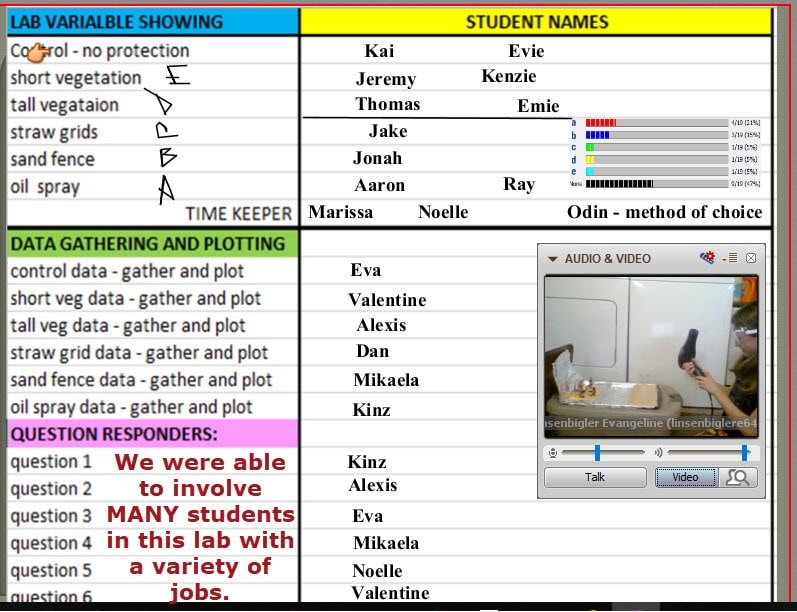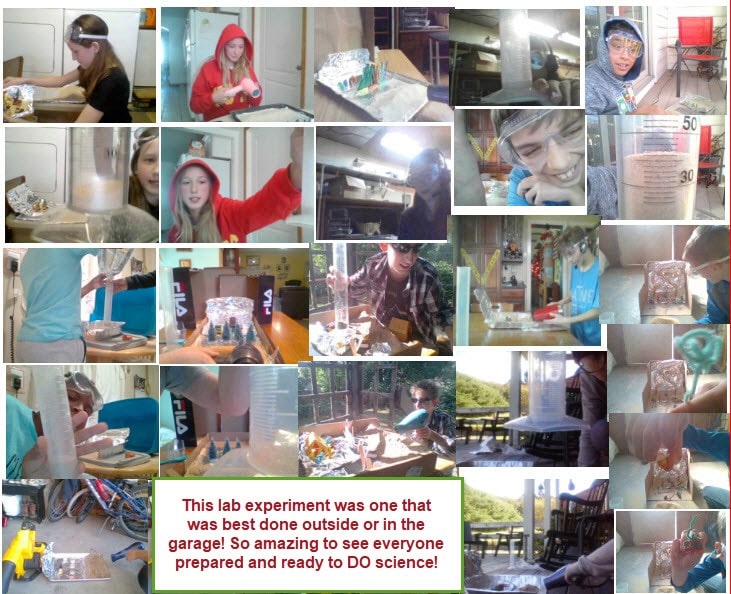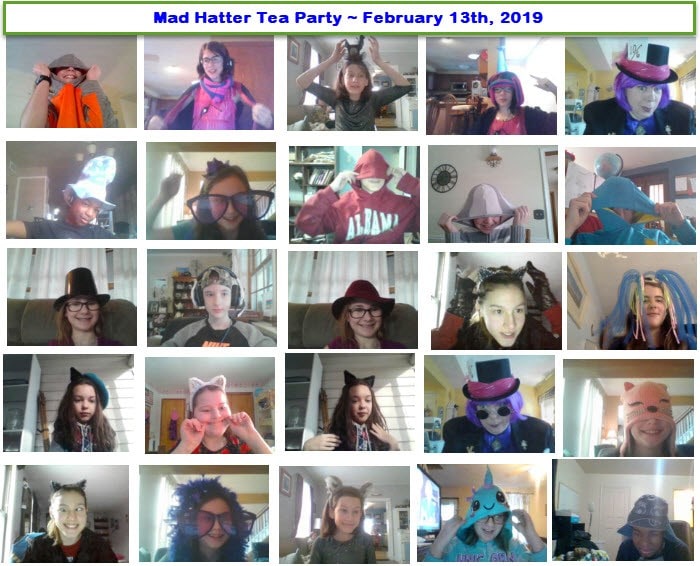Hi everyone; I am Mrs. Cindy Willits, M.Ed. I have had the pleasure of teaching online with PA Virtual since 2006 and have taught in various other capacities for many years. I am here to share with you some amazing ways that an online education can truly become a hands-on and immersive experience for your child! I always strive to make my classes engaging and to connect with my students meaningfully. Through innovative thinking, creative planning, use of webcam and online tools, getting hands-on with my online classes is amazingly memorable, and has become my favorite way to work with students! Join me now for some examples and PICTURES of how this works!
What Students Can Do
Think about the times that you have searched the internet for how to do something and watched a video, or the times you might have watched a cooking show and prepared a quick dish along with the host. Hands-on learning doesn’t require you to be physically in the same room with the instructor; you can prepare yourself to “play along” with the activity from your home or office. For example, students can get hands-on with science by gathering rock samples or soil samples. They can share these samples on the webcam in class, and use them to discuss the classification of rocks and soils. Thinking HANDS-ON in a virtual environment just requires a little shift in one’s mindset….as hands-on does not have to mean face-to-face!
For example, in my 6th grade Earth Science class, we undertake desertification, which is a huge lab project. Desertification studies the effects of sand dunes encroaching on a city and the different preventative measures one can employ to help stave off the devastation. We look at the effects of even removing plants and trees in our own areas and what happens with erosion. Students get involved in parts of the experiment by signing up for different variables or even to be data collectors on the board.

Students set up their clay city with certain measurement parameters and then sign up to test out different protection methods such as fences, vegetation barriers, and even an oil spray (like PAM) to see which works best. We also test out the control method – no protection. The wind is supplied with a hair dryer and the clay and sand are part of their school-provided materials. Students then take turns on the webcam demonstrating their protection method (the variable) and another student is our official timer so that we can keep things consistent. Students then have to measure the amount of sand that pummeled their city to see if any method was better at protecting it, so they are measuring in graduated cylinders and making observations and conclusions. We also make a hypothesis at the beginning and of course, test out all of the variables and record the data on our virtual whiteboard.

The scientific method unfolds before their eyes and they are naturals at being scientific detectives! It is amazing to have the tools and the collaborative interaction that we do as a cyber school to make scientific investigations like this possible. We can also research, in real-time, if any of these methods have been done successfully in real life and can share that evidence while we conduct the experiment!
And who would have thought you could do Reader’s Theater in an online environment? Students do not expect that when we begin our unit on drama and Shakespeare that they are genuinely going to enjoy it. But, with a little imagination, one can paint an amazing picture and give everyone in class a job, no matter what their comfort level with Shakespeare might be! From scenery, to sound effects, to music, the speaking parts, commercials, even intermission, imagination goes a long way to creating a memorable and enriching literary experience. Sixth graders doing Shakespeare probably never thought it would be that cool! This year we even had two students that were rather shy take on speaking roles in our play, and they really shined – everyone did! Check out our Google Slides project showcasing all of the roles and extra things we do for this play: 2019 Twelfth Night Google Slides Project.
Ways to Support Hands-On Learning from Home
Parents can help keep their learners engaged by considering ways they can manipulate objects and model what the teacher is doing on the webcam.
- When a young learner begins to learn fractions, Legos and other objects that can be separated into pieces or color coded are a really great tool to use.
- Curriculum kits, like K12, Inc.'s that PA Virtual uses, come with math blocks to offer a tactile connection to counting and other math skills.
- Parents can even print handouts—like ones used to make 3-D shapes—and cut them out or color them, so students can understand how to do surface area computations.
- It’s also a great idea to keep a dry erase board or paper notebook handy in class to complete math problem examples.
Remember that just because the class is online doesn’t mean you have to just sit there! Learners can and should actively apply learning with “old school” writing tools during class sessions. With a little ingenuity and planning, hands-on materials can make math more fun and engaging.
Homeschooling and cyber school families can also set up a home learning area, organized with bins for supplies and materials. If you know a science lab is coming up, gather the items that will be needed in a box ahead of time and have it ready on the shelf where you store your supplies. Keep scissors, markers, crayons, and paper handy and think about what you are learning when you are out and about. The beautiful quartz stone you found at the playground can come home and get put into the science bin, or that craft session that is coming up later in the week might need you to gather some felt, yarn, and a glue stick. Having a place to keep things organized and rotate out the materials needed for these learning experiences is a great way to get the most out of every teachable moment.
Teachers and instructors need to think about helping their learners prepare for these immersive activities by letting them know what to gather and have ready for class. Just like watching a cooking show and trying your hand at the recipe at home, online learning can be hands-on and interactive with a just little pre-planning and creativity.
Technology Brings It Together
So, if all of this has piqued your interest and if you have ever attended a webinar or virtual meeting on Skype or Zoom for work, you have experienced what it can be like to learn virtually. Facilitating collaborative experiences with online learning requires technology that allows students to work together with teachers/educators in an online space; that’s what makes these interactive, hands-on activities possible. At PA Virtual, we use a platform called Blackboard to allow students to interact with teachers. Students and teachers use their webcams and microphones, and even utilize a virtual whiteboard to show steps, pictures, diagrams, and drawings that make learning engaging.
Hands-on learning in a virtual environment can feel a little different at first, but once you and your child get involved and are prepared for upcoming activities, you’ll find that it can be engaging, productive, and fun! When students, parents, teachers, and schools find ways to integrate real-world adventures, take opportunities to create things, and allow students to share their discoveries in a cyber classroom, virtual learning become much more than just a “digital” experience. It becomes a human experience and one that any student can grow, succeed, and thrive in!





Comments